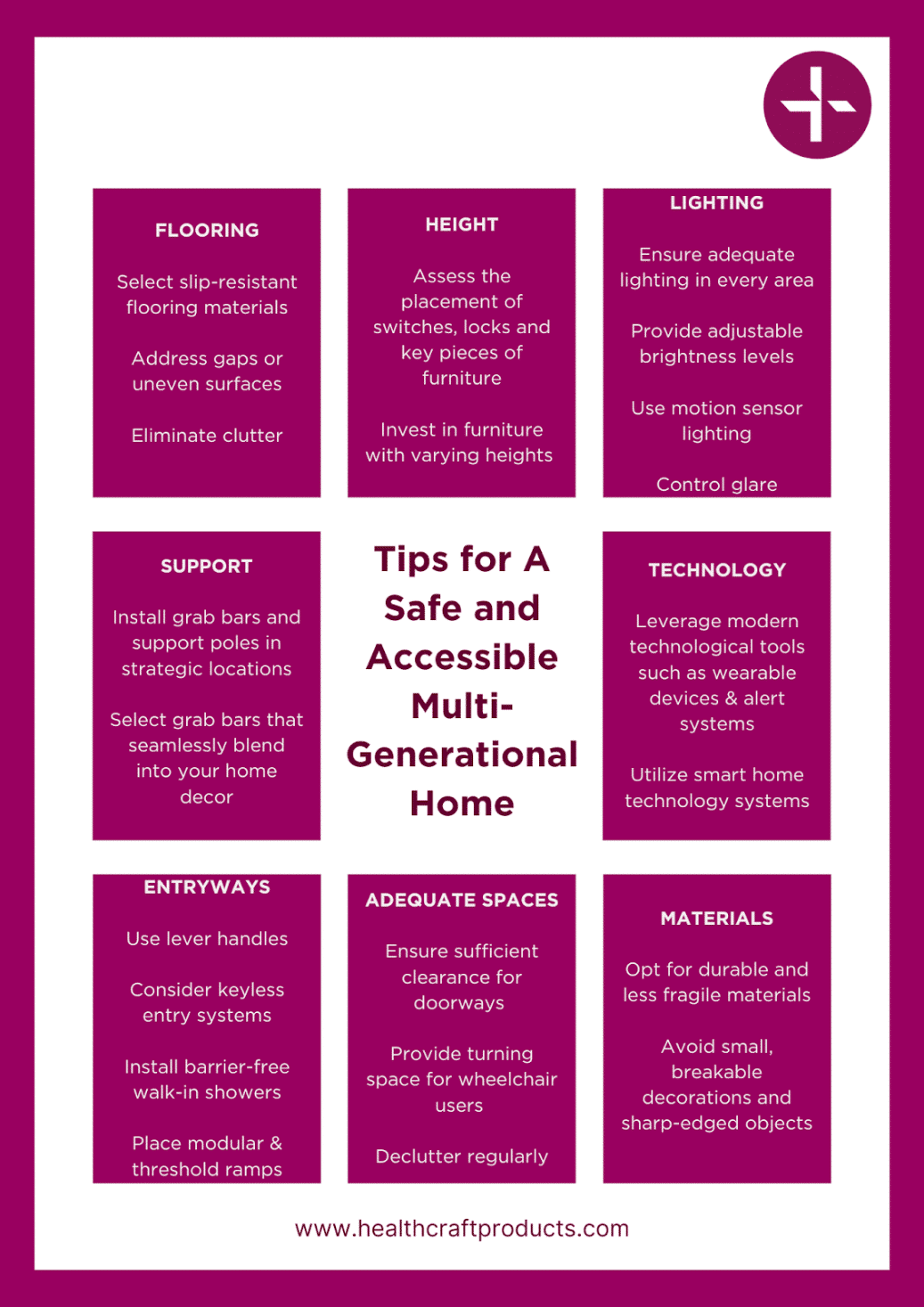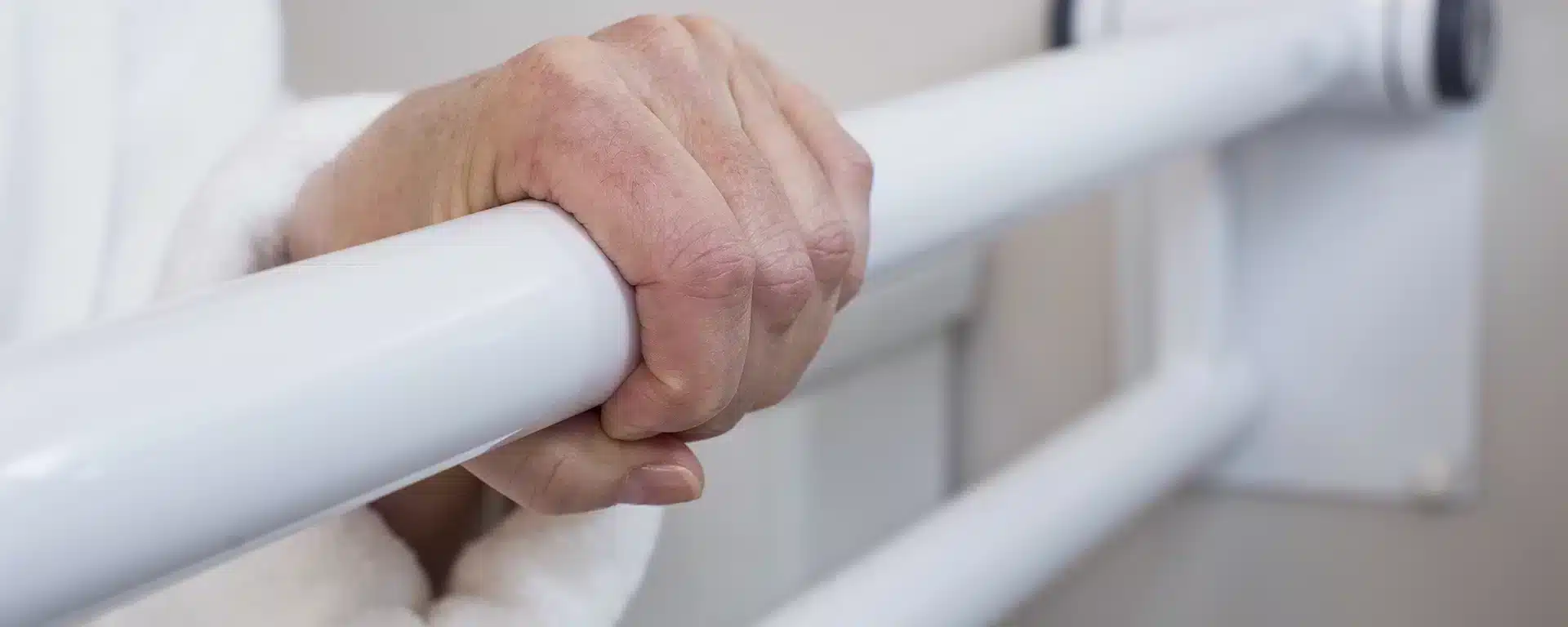Making Your Multi-Generational Home Safe and Accessible for Everyone
In the United States, the prevalence of multi-generational shared living space is on the rise, with over 6 million families now embracing this arrangement. This trend is particularly pronounced in the South and Western regions of the country.
Living in a multi-generational household has its undeniable advantages, such as strengthened family bonds, a robust support system, financial benefits through shared expenses, and more efficient care for family members. However, this unique generational living situation also presents its fair share of challenges. From diverse generations under one roof to varying needs and lifestyles, multigenerational homes require careful consideration.
One major challenge lies in ensuring that the shared living space is safe, comfortable, and functional for all family members, regardless of their age, size, skills, or gender. How can you guarantee that your multi-generational home is inclusive and accessible for everyone? In this article, we will delve into practical safety tips to optimize and enhance the safety of your multi-generational living space, for every stage of life.
Creating a Safe and Accessible Home for All
In creating a safe and accessible living space for every household member, there are certain essential aspects to consider. These factors play a crucial role in ensuring comfort, convenience, and most importantly, safety for everyone.
Flooring:
Start by selecting slip-resistant flooring materials (such as ceramic, porcelain, vinyl, or rubber), reducing the risk of accidents. Additionally, address any gaps or uneven surfaces, which can be potential hazards. It’s essential to eliminate clutter that could lead to tripping incidents.
Height:
Assess the placement of wall switches, handles, latches, pulls, and locks to ensure they are easily accessible, particularly for individuals using wheelchairs or those with limited mobility. Consider the accessibility of key pieces of furniture like sofas, chairs, beds, and tables, ensuring they allow comfortable sitting and standing. Given the diverse height, skills, and comfort levels within a multigenerational household, consider investing in furniture with varying heights. This approach accommodates the unique needs of each family member, promoting inclusivity and comfort for all.
Lighting:
Ensure that your multi-generational home has adequate lighting in every area and corner, and provide users with the flexibility to adjust brightness levels according to their specific needs by incorporating dimmable lights, and higher-level and variable lighting options. If possible, integrate natural light sources into your home’s design to improve visual acuity.
For added safety, especially during nighttime bathroom use, think about incorporating motion sensor lighting in hallways and bathrooms. These sensors automatically activate lights upon entry, reducing the risk of accidents in dimly lit areas. Additionally, take steps to control glare through the use of blinds, curtains, or automated shades, ensuring that your lighting environment remains comfortable and safe for all family members.
Support:
Elevating safety in your shared living space involves strategically installing grab bars and safety poles indoors and outdoors. These supportive features play a crucial role in fall prevention, ensuring that family members with varying levels of mobility can move around confidently.
Consider placing grab bars in key areas such as stairways, hallways, doorways, transition areas, and locations prone to wet conditions, like bathrooms. Modern grab bars, such as those from HealthCraft’s Plus and Invisia lines, are designed to seamlessly blend into your home’s aesthetic, avoiding any stigma often associated with institutional-looking assistive devices.
Technology:
Consider leveraging modern technological tools to enhance safety in your multigenerational home. Wearable medical and GPS alert systems offer peace of mind by providing an instant connection to emergency services when needed. These can be useful for family members with specific medical needs or vulnerabilities.
Utilize smart home technology systems to transform your multigenerational home into a safer and more convenient living space. This includes features such as CCTV, baby monitors, and automated systems that control lighting, locks, and appliances for added convenience and safety.
Entryways:
Replace traditional round doorknobs with lever handles – it’s a straightforward modification that significantly improves accessibility, particularly for kids, older adults, anyone carrying items, or those with limited hand strength or mobility challenges. In the bathroom, install barrier-free walk-in showers that eliminate the need to step over high bathtub walls, reducing the risk of falls for family members of all ages. Ensure that the shower design includes anti-slip features and grab bars for safety and peace of mind.
Place modular and threshold ramps where there is a gap between steps to facilitate easy access for individuals with mobility challenges or those using wheelchairs or strollers.
Adequate Spaces:
Creating accessible and secure spaces in your multigenerational home involves attention to specific dimensions and design elements. Ensure that doorways offer sufficient clearance: The minimum clear width for a single wheelchair passage must be 32 inches at the narrowest point, and ideally 36 inches to allow comfortable movement. These dimensions guarantee that individuals using wheelchairs or mobility devices can navigate through your home without hindrance.
Regularly declutter your living spaces to create a more open and accessible environment. This not only improves mobility but also reduces the risk of accidents caused by tripping or bumping into objects.
Materials:
More individuals in the household means a higher potential for accidents, especially when there are young kids and older adults present. Therefore, thoughtful material choices throughout your home are crucial for safety and peace of mind.
For instance, when selecting furniture, opt for tables and countertops made of durable materials like wood, acrylic, or laminate. These materials are less prone to shattering compared to breakable glass, reducing the risk of injuries in case of accidental bumps or falls.
Avoid small, breakable decorations that can pose choking hazards or sharp-edged objects that might lead to injuries. Instead, choose decor made from softer materials or with rounded edges

Living in a multi-generational living setup has its advantages, like strengthened bonds and shared expenses, but it also poses unique challenges. Ensuring a safe and accessible environment for everyone is critical. Follow the tips we’ve provided above and create a safe and inclusive family home that can last you for generations to come.






